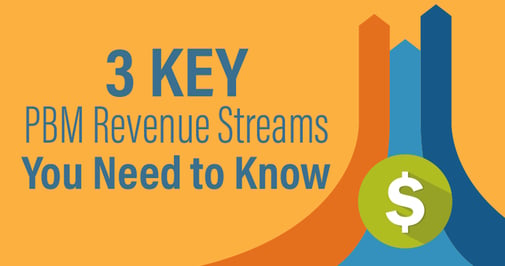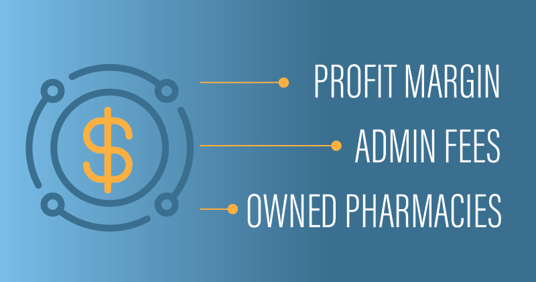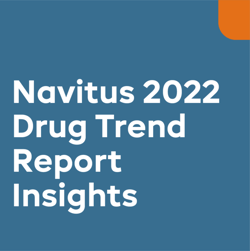Understanding how pharmacy benefit managers (PBMs) make money can help plan sponsors determine which PBM business model is best for their Rx plan – traditional or pass through.

Within the pharmacy supply chain, PBMs are an integral component. They negotiate contracts with drug manufacturers for medications and pharmacies to participate in their network to dispense medications. PBMs also play a significant role in offering cost containment strategies, access to prescribed medications and clinical programs to help improve health outcomes.
Do all PBMs operate the same? The answer is no, each PBM is different – it depends on what business model they are using and how it aligns with your goals. Choosing one PBM over another could impact how much you spend on your Rx benefits.
To operate as a business and provide services to plan sponsors, PBMs have to make a profit, but how much is the right amount? This blog provides insights into three key sources of revenue that PBMs can earn to help plan sponsors make informed decisions about their drug benefit plans.
#1 Profit margin
PBMs can earn money via several revenue streams. One example is from profit margins gained on adjudicated claims. Manufacturers pay PBMs rebates for drug formulary placement, and some PBMs retain a portion of these funds or receive other fees not categorized as rebates.
Traditional Model
Revenue is generated from pharma purchasing activities, so traditional model PBMs typically use a formulary with emphasis on high volumes to offer BIG discounts. On paper, big rebates and large discounts appear to be in everyone’s best interest, however, only some pharma generated revenue (e.g. rebates/discounts/incentives/fees) is passed back to plan sponsors.
Using a consumerism mindset, plan sponsors should keep an eye on what they are actually paying for. The reason for this is because, “PBMs are incentivizing higher list prices for medicines that enable them to create large rebates and discounts,” according to an article posted on forbes.com.
In this model, the plan sponsor may not have visibility into the monies retained.
Pass-Through Model
Spread based drug cost is non-existent in this model. PBM revenue is based on an admin. fee, so both plan sponsors and the PBM have a shared interest. As a result of this alignment, the pharma generated revenue that is received by the PBM is passed back to plan sponsors.
#2 admin fees
Another form of revenue a PBM receives is from administrative fees.
Traditional Model
This model may focus on generating large rebates and high-volume discounts in order to offer cost savings. The reason is to have the appearance of zero or low admin fees, however, they may be making money on the spread. Only some generated revenue is shared with plan sponsors, because most of the financial incentive may be used as revenue for a traditional PBM.
Is this model, the plan sponsor may not have visibility into the monies retained.
Pass-Through Model
This model offers the plan sponsor an admin-fee-only arrangement. And this business model is most typically used by a full pass-through PBM. When plan sponsors pay an administrative fee, they experience transparency of the prescription plan costs. Although a pass-through PBM also focuses on rebates, this business model ensures that any rebates, fees and discounts it receives are passed along to the plan sponsor.
#3 owned pharmacies
Some PBMs also earn revenue from pharmacies that they own (i.e., mail, retail or specialty). These pharmacies will function as standalone businesses for the PBMs. They can provide some form of control and also the ability for insight into claims detail.
It’s important to note that many PBMs own their own mail order pharmacies and may be steering volume to these facilities to increase their revenue. For example, some PBMs repackage products for mail order and reprice them, making them more expensive for plan sponsors.
According to Drug Channels Institute, “Average revenues per equivalent prescription are about four times larger at mail pharmacies,”1 which explains why some PBMs may focus on mail order.
Traditional Model
The PBM earns revenue from mail order and may use a different price list than retail. Mid-contract cost savings/re-negotiated discounts may be retained by the PBM, resulting in little transparency into what the plan sponsor is actually paying.
Pass-Through Model
The PBM does not earn revenue from mail order. It uses similar price lists as retail. Mid-contract cost savings/re-negotiated discounts pass-through to the plan sponsor since the PBM is transparent from a cost and operational perspective.

The Importance of Understanding PBM Revenue
Plan sponsors have several concerns that are top of mind. According to a survey conducted by the National Business Group on Health, “managing pharmacy benefits and especially the high cost of specialty drugs and therapies remains a top priority for employers. The survey found 85% of respondents rate high-cost drugs as the number one or two most concerning pharmacy issues.”
But they are also worried about medication affordability for their members. Consequently, they look to PBMs to provide programs and services that can help them reduce plan costs, remove waste and offer a sustainable program. Knowing how PBMs earn revenue is important because it can shed light on any potential impact on a plan sponsor's pharmacy spend.
Below are some questions plan sponsors can think about when making decisions about PBM contracts:
- How and why drugs are chosen to be on the formulary?
- Does the PBM contract offer a full pass-through arrangement, and transparency to business and operational decisions?
- Does the PBM contract pricing and definitions create an 'alignment of interests' or a 'conflict of interests' with the plan sponsor?
Take a deeper dive into this topic by listening to our podcast episode, How Do PBMs Make Money?
-
The 2018 Economic report on U.S. Pharmacies and Pharmacy Benefit Managers. Drug Channels Institute.




